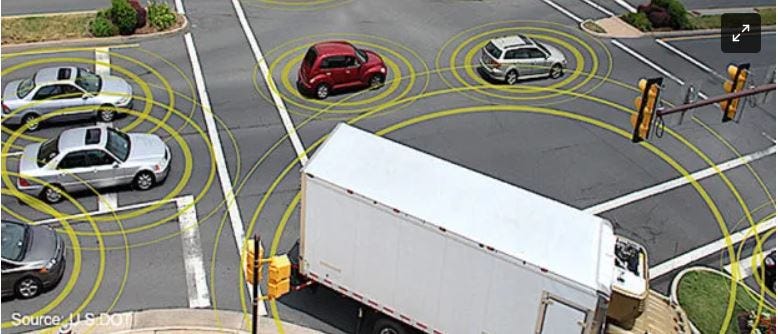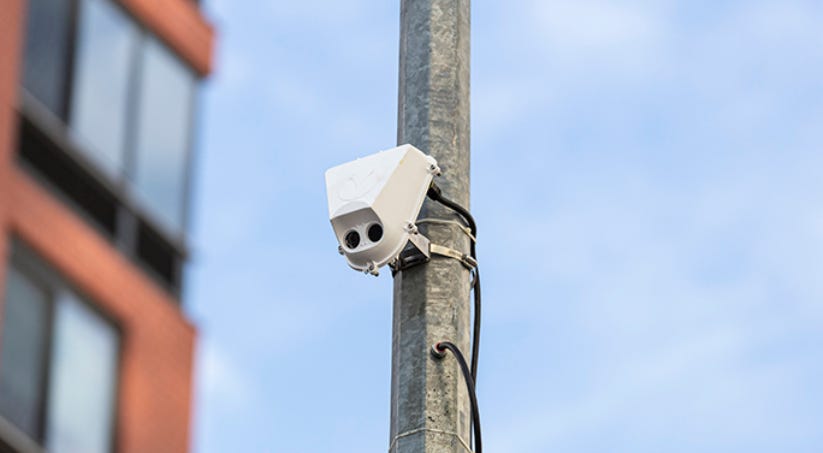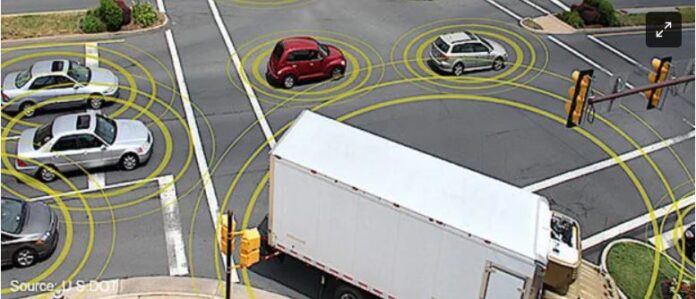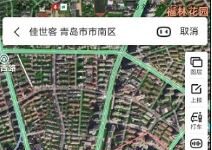Decision allows automakers, state DOTs, and equipment makers to operate C-V2X on U.S. highways and its infrastructure…
The Federal Communications Commission (FCC) this week granted a 5.9 GHz waiver allowing automakers, state departments of transportation and equipment manufacturers to operate cellular-vehicle-to-everything (C-V2X) technology on U.S. roadways.
The approval, which was announced as the annual ITS America conference commenced, allows 14 states, automakers and other stakeholders to use the 5.9 GHz spectrum for C-V2X deployment in both vehicles and road infrastructure. “The approval of this waiver is the first step to fully utilizing this lifesaving innovation and news we have long been waiting to hear. As deaths on our nation’s roadways continue to soar, it is critical that we maximize use of connected vehicle technology to keep all road users safe,” said Laura Chace, ITS America president and CEO, in a statement.
In December 2021, several entities, including large automakers and their suppliers, filed a joint waiver request. The issue has been contentious for years as the FCC, in 2020, decided to reallocate a major portion of the 5.9 GHz spectrum block that was set aside for automotive safety decades ago.

The FCC waiver request decision allows such companies as HARMON and other stakeholders to deliver safer products, said Suman Sehra, HARMON’s global vice president of product and innovation.
At ITS America, HARMAN, which has been testing use cases for V2x and other connected technology with American Center for Mobility (ACM), demonstrated a video “See Through” product that provides a feed of a vehicle ahead of the “host vehicle.”
Because of the partnership with ACM, first announced at MWC in Barcelona this year, the company can test products in real-world scenarios, Sehra said. “[This] allows us to deliver improved situational awareness between vehicles, vulnerable road users, and infrastructure without the need for increased computing onboard every vehicle and personal device,” he said.
At ITSA, the General Motors GM 0.00 Future Road team demonstrated connected vehicle and smart infrastructure technology with partner INRIX. GM Future Roads is a GM start-up that builds upon a world with zero crashes, zero emissions and zero congestion, the company said.
GM demonstrated its Safety View tool, its first Future Roads product that was co-developed with INRIX, which helps transportation planners and operations managers turn mobility data into safer roadways and cities, said Harnit Anand, GM’s head of strategy and business development for GM Future Roads and Smart Cities. “It is one of the few offerings that provides crash, vehicle, vulnerable road user (VRU), and U.S. Census datasets and analytical tools in one place—bringing together integrated datasets for safety planning,” he said. “We can also help agencies import their own local crash and demographic data in Safety View.”
Anand said that properly equipped vehicles can help planners understand factors that impact safety. “For example, wheel sensors, GPS navigation, the telematics system, windshield wipers, and the antilock-braking system/electronic stability program, can tell us a lot about road quality, driving conditions, seat belt usage, and other elements,” he said. “In terms of sample use cases for agencies, having these data insights could help them optimize operations for slippery roads during snowfall or identify where and when to make road repairs.”

At ITSA, Viva, demonstrated its Near Miss product, which is part of the company’s Smart Road Safety solution that uses AI to enable root cause analysis into “near collision” events. Near Miss uses Computer Vision to track the path of road users to generate statistics on Near Misses and helps users identify their root causes.
Viva is piloting Near Miss with the New York City Department of Transportation (NYC DOT), with 12 sensors already installed in Manhattan, Brooklyn and Queens. Currently, New York City DOT is assessing how it could use this data to prioritize safety improvement projects across the city, the company said.


























